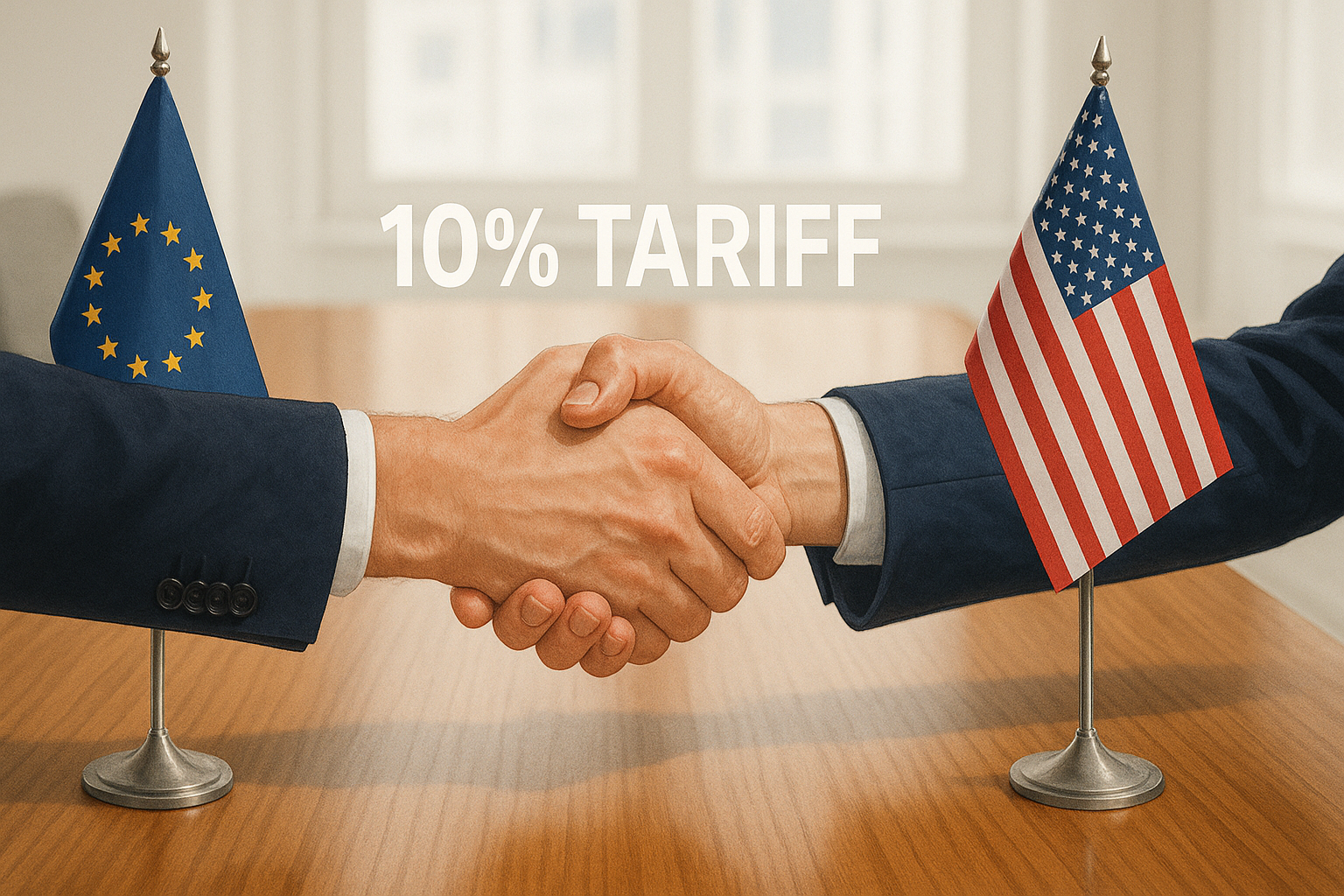Brussels is ready to take its medicine, but it's asking for a measured dose.
In what might be the diplomatic equivalent of saying "let's be reasonable about this mugging," the European Union has reportedly floated a proposal to accept a flat 10% tariff on its exports to the United States. It's a pre-emptive move that reveals just how seriously European officials are taking President-elect Trump's trade threats.
I've tracked transatlantic trade tensions since Trump's first term, and this represents something new—an acknowledgment that some pain is inevitable, paired with an attempt to make it predictable.
According to German business daily Handelsblatt (always a solid source for European economic machinations), EU negotiators are essentially trying to transform what could be a chaotic trade war into something more... manageable. "Hit us with 10% across the board if you must," they seem to be saying, "but please spare our automotive, pharmaceutical, and electronics sectors from those 60-100% tariffs you've been threatening."
The proposal isn't just about accepting punishment, though. It comes with strings attached—or perhaps carrots dangled. Brussels is reportedly offering to lower its own tariffs on American vehicles, ease regulatory hurdles for US automakers trying to break into European markets, and—here's where it gets geopolitically interesting—completely ban Russian natural gas imports.
That last bit? It's practically screaming "we'll buy your expensive LNG instead of Putin's pipeline gas." Subtle, it ain't.
What strikes me as particularly revealing is the EU's apparent recognition that Trump needs tariff revenue to fund his promised tax cuts. This is trade diplomacy with a fiscal awareness twist. "We understand you need to extract some cash," the Europeans seem to be saying. "We'd just prefer a controlled donation rather than exsanguination."
There's a certain economic logic at work. A flat 10% tariff spread across all European exports would be less distortionary than targeted high tariffs aimed at specific industries. It would distribute the pain more evenly across the EU economy rather than decimating, say, the German automotive sector.
For Trump, it potentially delivers a predictable revenue stream while still fulfilling his campaign promise to get tough on trade. Almost reasonable, if you squint hard enough.
But—and there's always a but in these negotiations—US negotiators haven't agreed to cap auto tariffs at 10%, according to the report. Cars remain the crown jewel of European exports to America (especially for Germany), and Trump has long fixated on German vehicles as a symbol of what he perceives as unfair trade.
Look, what we're seeing is the EU trying to convert unpredictable chaos into structured discomfort. It's like choosing to have a tooth extracted under anesthesia rather than waiting for it to be knocked out in a bar fight. You're still losing the tooth, but at least you can plan for the recovery.
The financial markets haven't fully processed these developments yet. A flat 10% tariff would squeeze profitability for European exporters across the board but might actually boost certain American sectors—particularly natural gas producers, if that Russian ban materializes.
It could also accelerate European manufacturers' existing plans to increase production in the US. Nothing motivates factory construction on American soil quite like the threat of border taxes. (German automakers have already been expanding their American operations for years—those BMW SUVs you see everywhere? Most are made in South Carolina, not Bavaria.)
The timing creates an interesting economic tension. Just as the Federal Reserve contemplates continued interest rate cuts to support the American economy, the incoming administration is preparing policies that could push prices higher. Lower rates from one hand, inflationary tariffs from the other... it's the kind of policy contradiction that makes central bankers reach for the antacid bottle.
Having covered three different rounds of Trump-era trade tensions, I can't help but notice the shift in European strategy. There's less moral indignation this time, more pragmatic acceptance. They've seen this movie before and are trying to negotiate a less frightening ending.
Whether this 10% solution gains traction remains to be seen. But one thing's clear—the intersection of fiscal policy, trade negotiations, and energy geopolitics rarely produces a smooth ride. Market participants and European exporters alike should probably buckle up.




